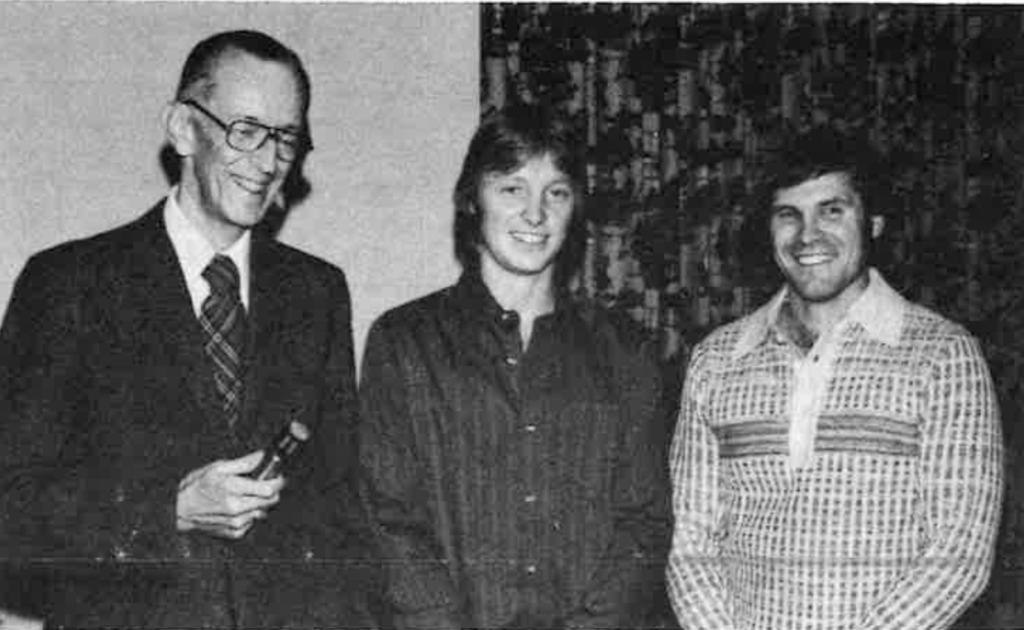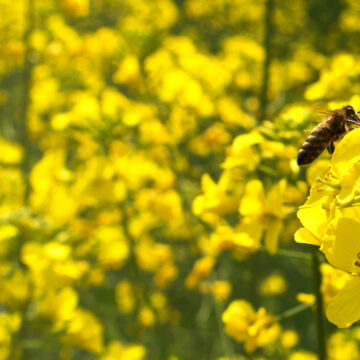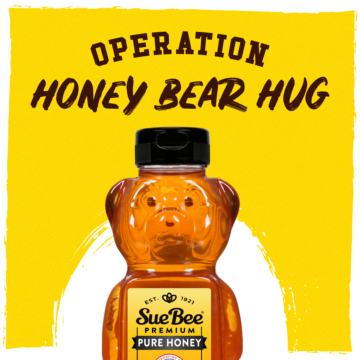A Brotherly Love of Honey
Sioux Honey’s Mark and Doug Mammen reflect on their combined 93 years at honey co-op
Let’s put 2.8 billion pounds of honey into perspective. That’s enough honey to fill:
- 353 Olympic-sized pools (each one holding 7.9 million pounds of honey)
- Or … enough honey to fill 2.24 million 20-ounce YETI tumblers
- Or … enough honey to fill 89,600,000,000 (89.6 billion!) tablespoons
You get the idea. It’s a LOT of honey. And it’s how much honey is estimated to have been collected by the beekeeper members of the Sioux Honey Co-op over the past 100 years. Yes, an “estimate,” but one that’s probably close to spot-on because it’s coming from two brothers who have worked at Sioux Honey for nearly half its existence.
Meet Mark and Doug Mammen. Mark, currently President Emeritus, has worked at Sioux Honey for 48 years. Doug, currently vice president of member relations, has been with Sioux Honey for 45 years. If anyone knows how much honey the co-op has collected over Sioux Honey’s 100 years, it’s these two.
Which is why we sat down for a chat with the Mammen brothers as we celebrate our 100 years as a beekeeper co-op – to learn about some of their insights into the world of honey; hearing about things they’ve absorbed over their long tenures in the cooperative.

The ‘Correctionville Pipeline’
Mark and Doug weren’t the only Mammens to work at the Sioux City, Iowa-based honey co-op. Their father worked at Sioux Honey as well, for 28 years.
“Our aunt, uncle, sister, and one of our cousins worked here, too. We had a regular pipeline from Correctionville, Iowa, which is where we’re from,” says Mark, who spent time in the packing line for many years before moving to beekeeper-member relations. “There was a number of us from Correctionville who worked at Sioux.”
Correctionville is small Iowa town (population 806) directly east 33 miles from Sioux City.
“There were a lot of people from Correctionville who drove 30 miles every day – rain, sunshine, snow,” Mark continued.
“And then many moved to Sioux City,” added Doug, who spent several years in the co-op’s processing and shipping departments.
Family has always been front-and-center at Sioux Honey, which began in 1921 with five beekeepers who lived in the Sioux City area.
“It was five local beekeepers with $200 cash capital and 3,000 pounds of honey (valued at $500) that started the co-op,” said Mark.
“It was the motivation, creativity and ingenuity of those early beekeepers that grew Sioux Honey. At that time, there was really a need for a honey packer in the Midwest. The east had plenty of packers and there were packers out west, but not here in the Midwest where beekeepers needed packing facilities, so they had a place to sell their honey. That’s how the idea of the co-op came to be.”
Growing the Membership
As a co-op, not a corporation, Sioux Honey is about teamwork. For the past 100 years, the co-op has kept its focus on what is best for the beekeeper members, our honey and the honey-lovers who buy Sioux Honey, whether it’s SUE BEE® honey, AUNT SUE’S® Raw & Unfiltered Honey, SUE BEE® INFUSIONS™ honey, SUE BEE® SPUN® honey or any of our other honey products.
“I don’t think many people really know what a cooperative is,” says Doug. “We’re actually owned by the beekeepers.”
Those beekeepers – all 200+ of them today – pool their honey together and everyone shares in the profits from the sales of that honey.
“When we started, it was a small group of beekeepers with a small pool of honey, but the co-op gave them an outlet for all of it,” says Mark. “At that time, a lot of them would deliver their own honey in pick-ups. It has obviously really evolved over the years.”
The five beekeepers who started the co-op began with about 3,000 pounds of honey in the first year. Today, the co-op collects about 30-38 million pounds of honey each year. The original five also packed their honey and marketed it, too.
Today, the main thing the beekeepers need to do is focus on keeping their bees healthy so they can produce the delicious honey we have come to enjoy at home on a daily basis.
“Our beekeepers don’t have to spend time marketing their honey or selling it. We supply them with containers, either 55-gallon drums, barrels or new totes that hold two-and-a-half to four-and-a-half drums of honey,” says Mark. “Independent beekeepers have to find their own containers and buy them, and they’re pretty expensive and hard to find these days.
“Then we pick up their honey. They just make a phone call, and we come right away to pick it up. Bring it back, bottle it up, send it to stores, market it and handle all the sales.”
It’s a big reason there is a waiting list to become a Sioux Honey beekeeper. Mark and Doug say there is a process that potential beekeepers need to go through, which includes checking the quality of the beekeeper’s operation.
“We always feel that when we accept a new member, we want them in for the long haul, not just one year,” says Mark.
Once a new beekeeper is accepted, the Mammen brothers make it a point to get to know them. Mark and Doug say they know all of the current 200+ Sioux Honey beekeepers by name and face – and they’ve met many of them in person. The newest beekeeper member of the co-op is number 3,083.
As for the oldest current membership, that distinction goes to the Sundberg family, which is on its third generation of Sioux Honey beekeepers. They hold Sioux Honey Co-op beekeeper number 44, which has been passed down from generation to generation.
“I have a membership list in my office that goes all the way back to number one,” says Doug.

Ensuring Quality
Part of the vetting process for accepting new Sioux Honey Co-op beekeepers is testing their honey to make sure it meets the standards of the cooperative.
After the Sioux Honey in-house labs test the honey to ensure it meets our high standards, samples are then sent to accredited third-party labs where they go through another series of tests that range from purity to pollen analysis.
Even after the members are accepted into the co-op, their honey is still tested rigorously each year to ensure that the high quality remains the same year to year.
Nearly 5 decades of Making Friends … and Counting
Looking back on their time at Sioux Honey, Doug and Mark both point to the relationships with the beekeepers as some of their fondest times.
When asked more about his experience and favorite part about working at Sioux Honey Doug replied, “The beekeepers and the people you work with here. It’s always been a great place to work, but the relationships I’ve formed over the years … some of my best friends are our member beekeepers.”
“Ditto,” said Mark.
“When you come up through our Member Relations group, you really get involved in that side of the business. The people you get to know over the years, just the pride, I guess, in being with a company that stands for what Sioux Honey stands for.”



